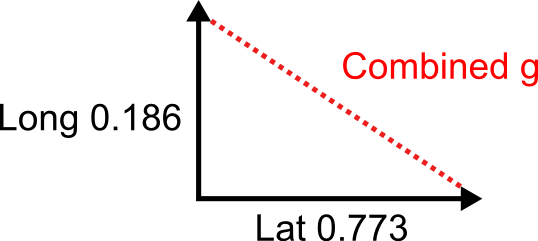How do we calculate Combined G?
Lateral and longitudinal acceleration (g forces) are both derived from vector velocities (Vx & Vy); as such, they have magnitudes and directions.
This calculation is not a case of simply adding the two velocity components together. As two forces are being measured at right angle degrees from one another, Pythagorean Theorem can be used to add the two vectors to gain the combined magnitude of the two forces.

Using the above theorem:
a = lateral g
b= longitudinal g
c = combined g
So, for example, a lateral accel value of 0.773 g, and a longitudinal acceleration value of 0.186 g would give a combined g value as shown below.
 |
0.186² + 0.773² = 0.63213 √0.63213 = 0.79507 Rounded to 0.795 |
